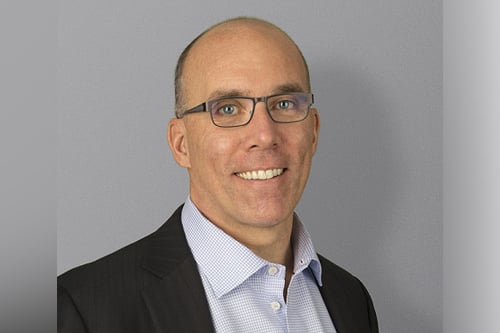HR leaders are told daily that if they want to reach the C-suite, they need to position themselves as a strategic business partner – but what does that really mean?
John Sullivan, CEO and president of real estate giant Cadillac Fairview, shared his insights with HRD about how HR professionals can best partner with leaders to achieve business outcomes, and prove their essentiality.
Why are people and human resources important at Cadillac Fairview?
A few years ago, CF embarked on a transformative people journey to reinvigorate the company’s culture and ultimately “make people and culture our competitive advantage”, and this exact phrase became one of five objectives in CF’s overall business strategy.
CF has a five-year people strategy that aligns with our five-year business strategy, and we set employee engagement as a key people measure in the overall business strategy along with other financial and operating measures. CF’s people strategy is continually reinforced through many forums including an annual organization-wide people objective, board of director reviews, and reinforcing CF values and behaviors in our everyday work and performance reviews.
We believe leaders drive values, values drive behavior, behavior drives culture, and culture drives performance. We’re certainly not perfect, but our leadership team tries to live that credo each day and role model the behavior and culture that makes us uniquely successful.
The results from this overall approach have been stellar and have enabled us to reach a whole new level of performance. Our culture positively shifted and is more consistent, and we’ve achieved record earnings and rates of return over multiple years. We’ve also been externally recognized for the strength of our people and culture with awards such as Canada’s Passion Capitalist, Best Employer in Canada, Canada’s Most Admired Corporate Culture, HR Champion of the Year, HR Executive of the Year, 50 Most Engaged Companies and Elite 8 in North America, and
IBM Global Top 25%.
Many factors contribute to a company’s success, but I’m convinced that in today’s volatile global economy, the greatest advantage derives from people and culture.
What’s the biggest divide between the C-suite and HR, and how can this be bridged?
We’re starting from a position of strength in that we have cross-functional leadership commitment from the top of the organization to making people culture a competitive advantage, and have people measures as part of our overall business strategy.
Typically the biggest divide between the C-Suite and HR comes either when HR is leading challenging change, or when HR proceeds with initiatives that are seen as “HR initiatives” versus “business initiatives”. On the first aspect, HR has a natural leadership role when it comes to guiding the organization through challenging change such as restructuring, performance management, compensation, operating efficiencies, behavioural or organizational changes. It can be tough to get executives in every function on side and moving in the same direction as a team. On the second aspect, people-related initiatives that aren’t well connected to the business with a clear line of sight to improved business outcomes are prone to failure, and even if they launch successfully, they likely won’t stick.
A key role of HR is ensuring people strategy is well connected to business strategy, and then HR must deploy disciplined project and change management to execute, ensure the change sticks and has a meaningful impact on business performance, and measure that impact. HR professionals themselves must be seen as credible, trusted advisors and “people experts” who add unique value to the business.
How can HR professionals in any organization ensure they speak the same language as their CEO?
Everyone talks about how HR should “get to know the business”, so that’s a given. The key is what you do with that business knowledge once you gain it. Good HR professionals figure out how to connect people strategy and business strategy to improve business outcomes. HR is the steward of people systems in an organization, but HR needs to understand the key components of how the business operates and measures results if they want those people systems to make a difference. It’s similar to Finance being a steward of our financial systems, but can’t do this in a vacuum, and have to connect numbers to business reality and how the company will be successful looking forward.
HR professionals need to realize that their customers are actually the customers of the business, both internal and external stakeholders for which HR should be creating value. Often HR is internally focused on employees, managers and teams, but they should think about what value they can create for external customers, partners, investors, regulatory bodies, and the communities we serve. HR is the architect behind boosting individual and organizational capability to effectively execute strategy and plans, and all CEOs are interested in that.
In this context, HR can then talk about enabling the organization to achieve better results in a language to which a CEO can relate.
What one piece of advice would you give to all HR professionals?
I recently endorsed a book called “The Real Deal On People: Straight Talk On How The CHRO Creates Business Value” by Les Dakens, and I’m quoted saying “In any company there are many business drivers that determine success. Strategy in general and people strategy in particular also play a key role to how a company performs. People can be your number one competitive advantage, they can be the differentiator. The CHRO plays a vital role as a business partner to the CEO in helping to develop a people strategy…”.
HR is an important enabling function in an organization, and one piece of advice I’d give all HR professionals is to recognize that HR is not about HR, it’s about the business. This sets the right outside-in mindset and frames HR’s contribution in the context of the value HR creates as defined by stakeholders in a complex internal and external environment.
Related stories:
Why HR’s communication is failing
Is this the best way to build leaders?

